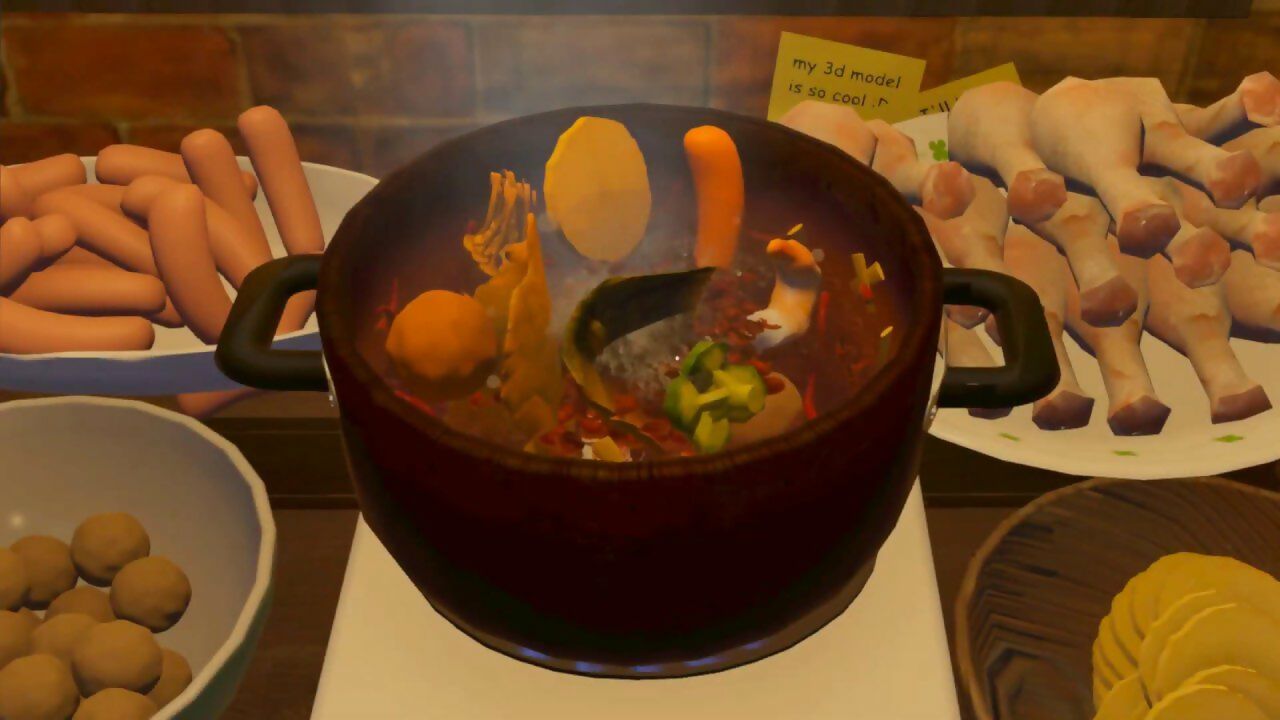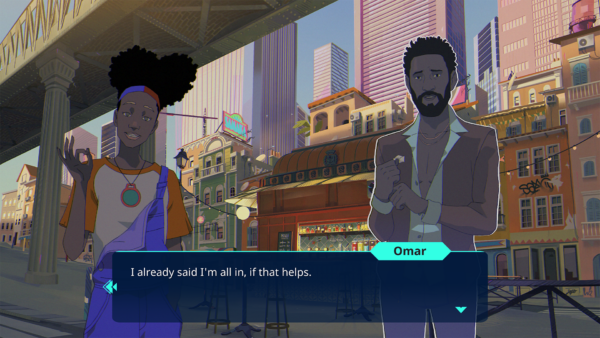
It’s Christmas Eve, and you’re all alone in your cosy Manhattan apartment. A pot of sausages and vegetables bubbles comfortingly on the stove, the sound mingling with the rush of traffic outside. So begins Hot Pot For One, a disarmingly personal interactive tale by Rachel Li and Qin Yin. The design duo’s game is rich with the kinds of details that could only come from lived experience: the photos and odd bits of ephemera stuck to the fridge; the knick-knacks crowded onto shelves; the desk incongruously placed next to a kitchen unit, meaning the drawer can only be opened by a few millimetres.
“It is indeed a personal game,” agrees Li, who co-developed Hot Pot For One as her game design thesis project at New York University. “It’s heavily inspired by our experiences as international students who have to live in a foreign country far away from family and friends. That means learning a new language, understanding a new culture, and adapting to a new lifestyle. As exciting as it may be, we often feel very lonely, especially in the holiday seasons, when our local friends get to go back to their families… making food from home has been a safe space for me; the familiar taste brings me comfort, reminds me of good memories, and brings people’s hearts together. Hot Pot For One is inspired by all those stories.”
As a game, Hot Pot For One is simplicity itself: you pick your ingredients – chicken legs, broccoli, mushrooms, that sort of thing – and lower them into the pot of broth warming on the stove. As all this is happening, though, a bittersweet narrative unfolds: you’re expecting a few of your friends to come around and share the meal, but as messages keep popping up on your phone, it becomes clear that you’ll be spending the evening on your own.
“It’s a mix of positive and negative emotions,” Li explains. “There’s the satisfaction of hot food cooking in the pot, but also the cold and snowy winter outside. We have the warmly lit kitchen and the rest of the apartment hidden in the dark. Players are given plenty of food from the start, but have to dump everything away at the end. We intentionally filled our entire game with such contrasts and emotional ups and downs because we believe this complicated and often conflicting feeling is closer to how our emotions work in real life, making the story more realistic and relatable.”

What to do with all the leftover food? You can try to pack some of it away in the fridge – the rest goes in the bin.
That realism took time to create, though: all told, it took Li and Yin around 18 months to build the game. “A huge chunk of the time was used to design the kitchen space, make food models, and customise textures,” Li says. “We did plenty of research to develop a personalised kitchen layout because we wanted it to feel realistic… We asked our fellow classmates and friends to take photos of their kitchens to make sure we got the details right. It took us a couple of months to iterate and block out the level in 3D. For the 3D models, we first used existing assets to occupy the space to get the feeling exactly right; the meshes were then modified and reskinned with original textures to match the visual aesthetics.”
Hot Pot For One, then, is a rare example of a game that goes for smaller, quieter emotions rather than grand themes – it’s the game equivalent of a poem or a short story, perhaps. “It’s still rare to see personal stories in games, because they’re more about self-reflection and everyday moments and are thus more static and internal,” Li agrees. “It’s less about action and excitement than quiet contemplation. One of the main design objectives of our project was to convey subtle emotions through slow and mundane activity. This is challenging because we need to let the player slow down, get into the mood of the story, and be ready to listen to what we’re trying to say. Slowness and silence are dangerous elements in game design because it’s easy to bore your players and lose their attention. So I can see why other games choose not to do that.”

Hot Pot For One began as a tiny demo with a pot of boiling water. “Now it seems pretty crazy to me that someone would design an entire game from an ambiguous emotion we couldn’t even define,” Li says.
The game is made all the more poignant because it captures such a brief moment in time – after graduation, Yin got a job and moved back to Beijing, while Li stayed in New York. The pair probably won’t make another game together, Li says, but she does at least have a concept in mind if they do team up again. “During quarantine, we developed a hobby of birdwatching in the city,” she tells us. “We might make a game about that in the future!”
Food physics
One of the most charming aspects of Hot Pot For One is its use of physics: there’s a tactile quality to the way your ingredients wobble and bounce around as you place them in your cooking pot. And later, when you’re faced with the gloomy task of throwing all the uneaten food away, you’ll often end up with assorted sausages and mushrooms bouncing off the side of the bin and onto the kitchen floor. “Working with physics is always super-messy,” Li says. “It breaks so easily that adding physics immediately makes your game funnier. It’s a good thing if you want that kind of humour in your game; in our case, it’s trickier. We needed an accurate simulation of physics for individual food pieces and their interaction with the environment, in order to make the experience smooth and enjoyable; however, we kept the physics effects rather contained so that the simulation wouldn’t get too chaotic and break the mood. A lot of tweaking and fine-tuning had to be done to find the perfect balance.”
Hot Pot For One is available on Steam and itch.io now





